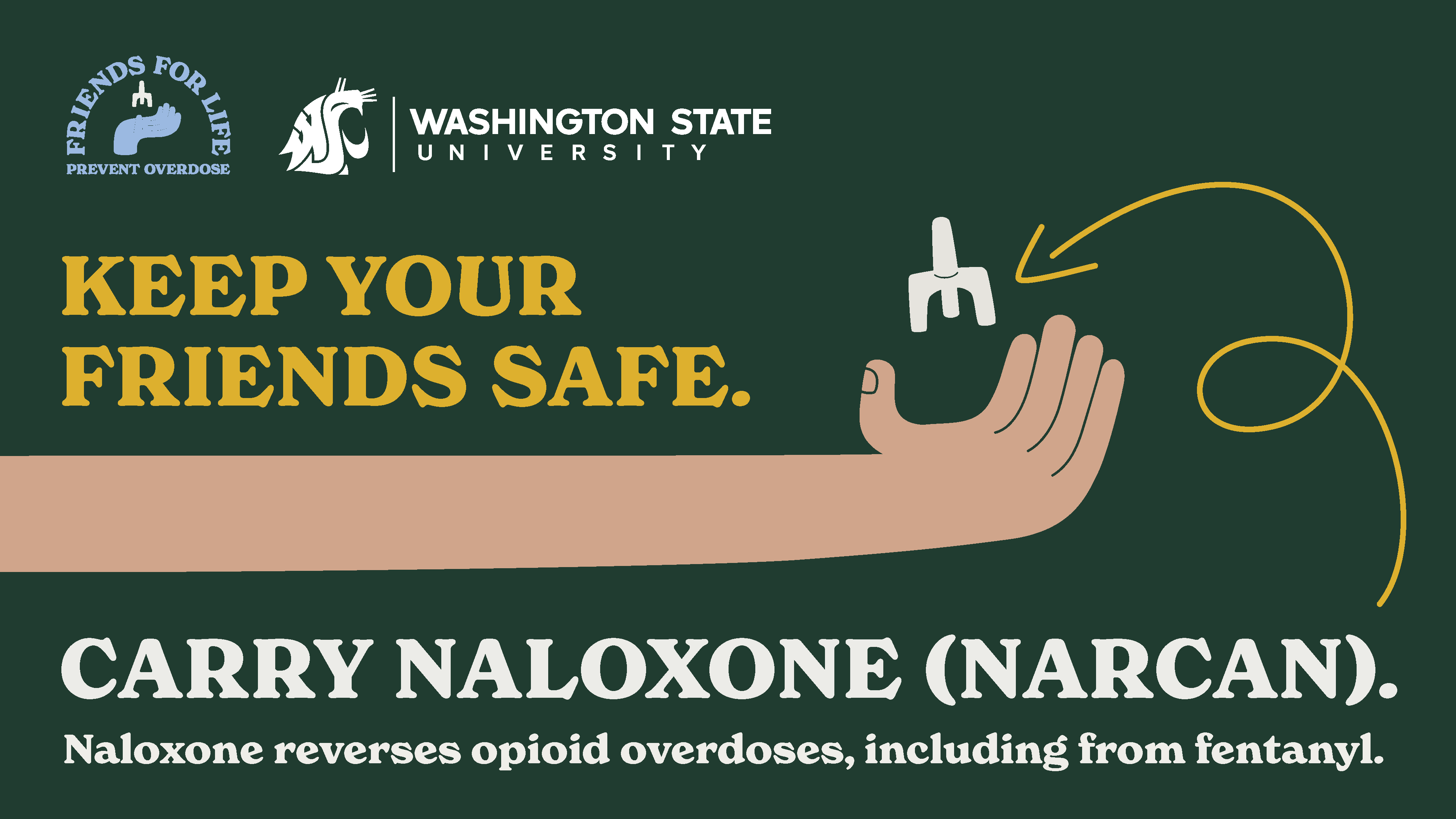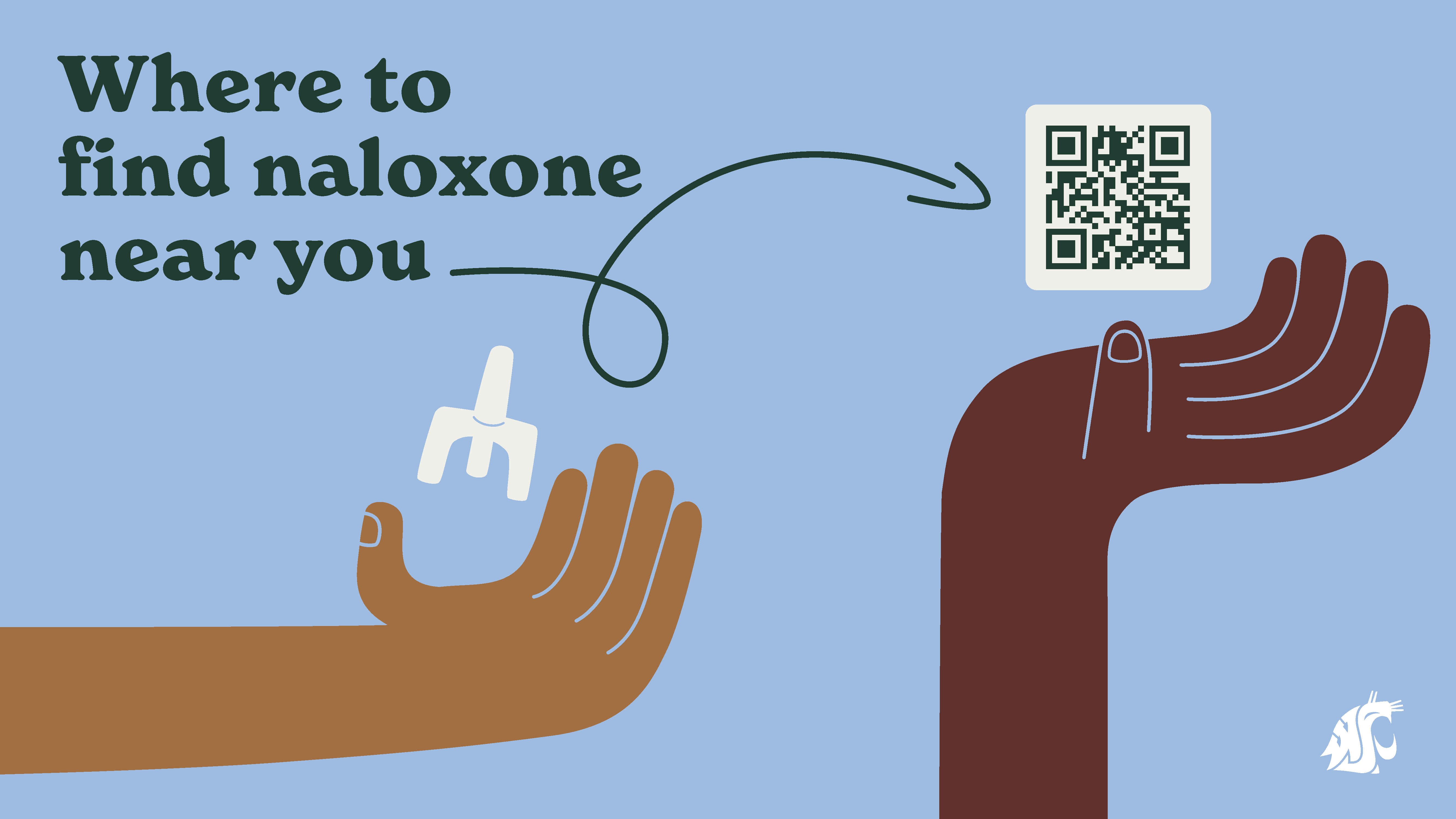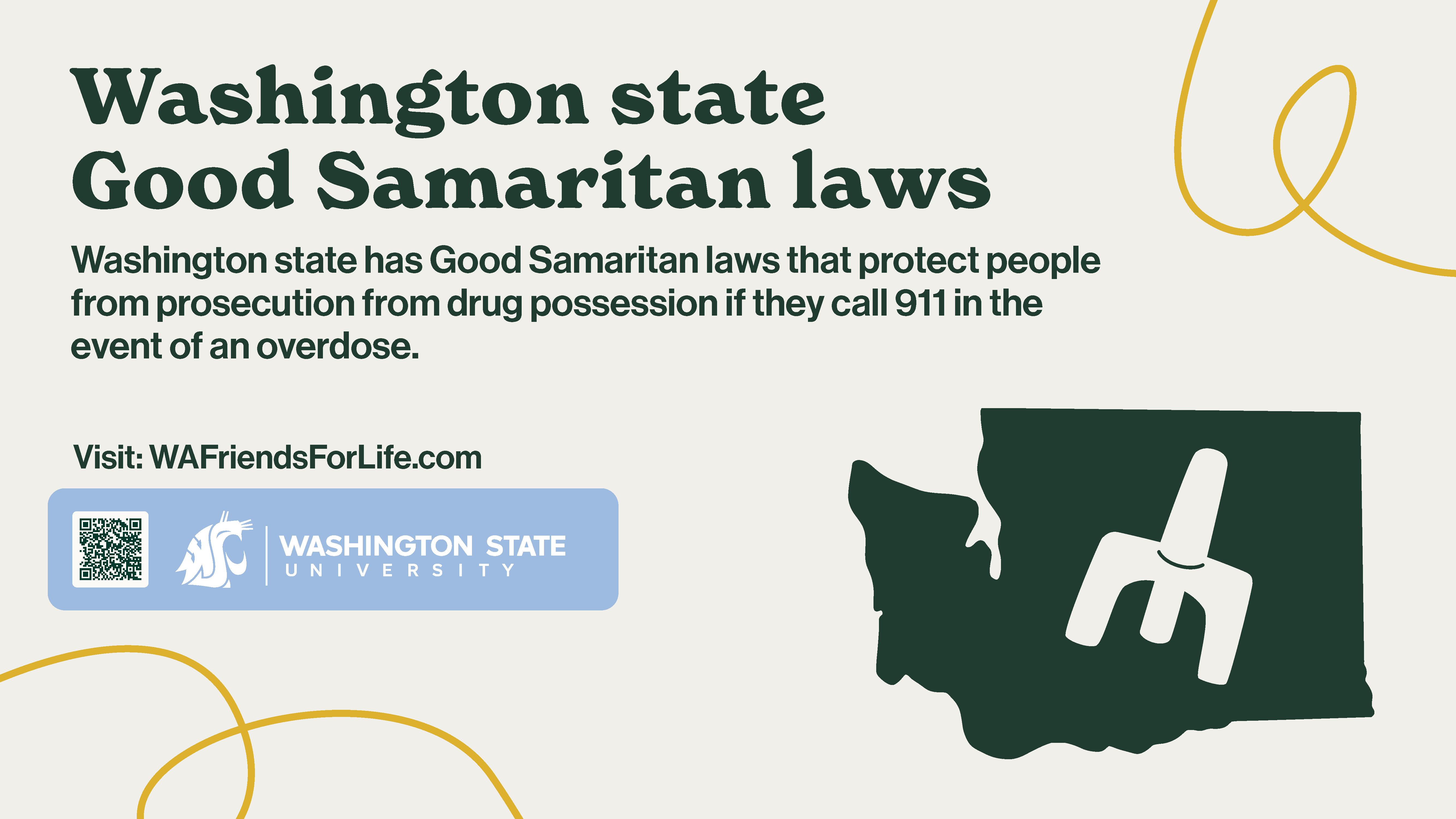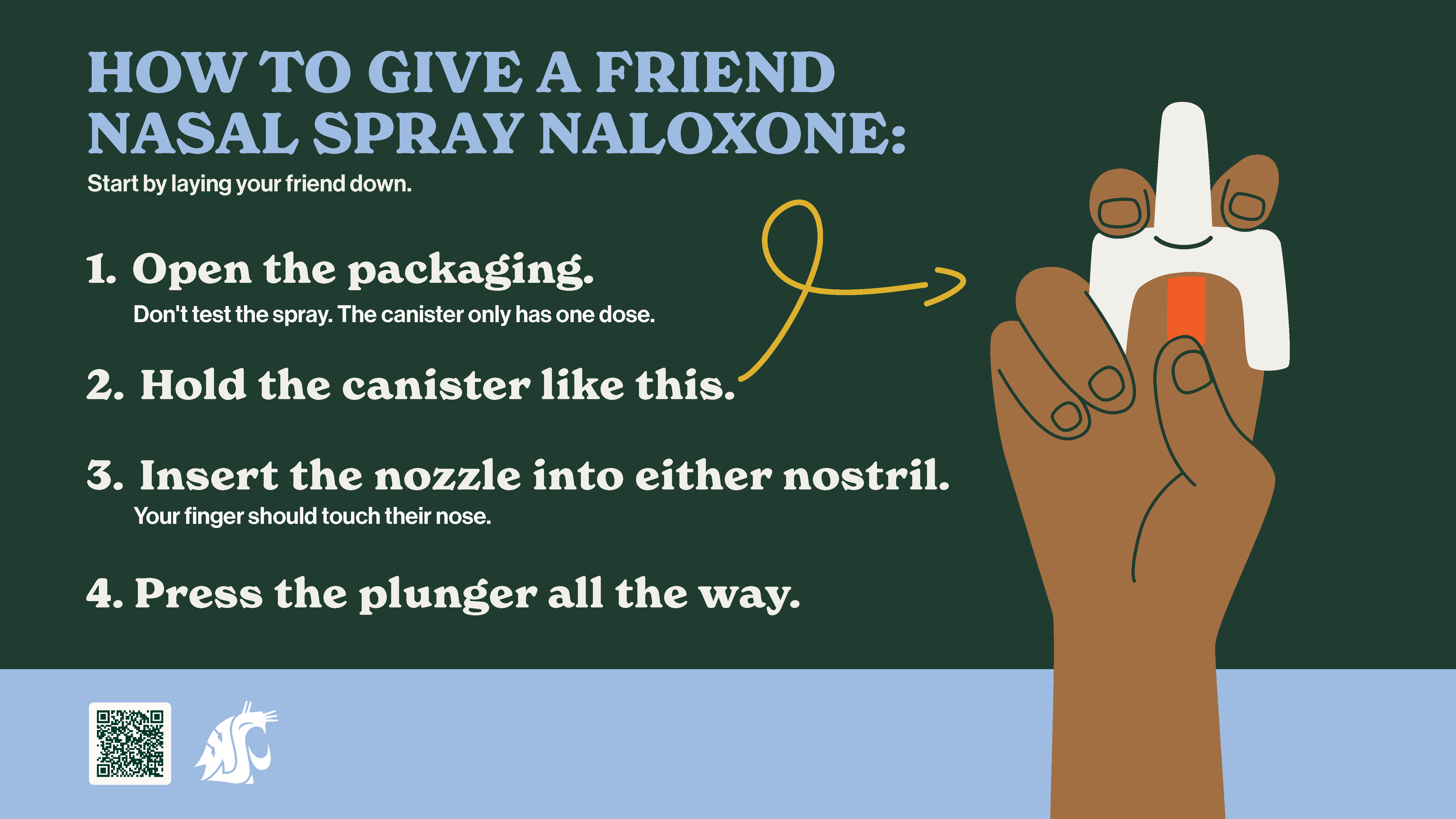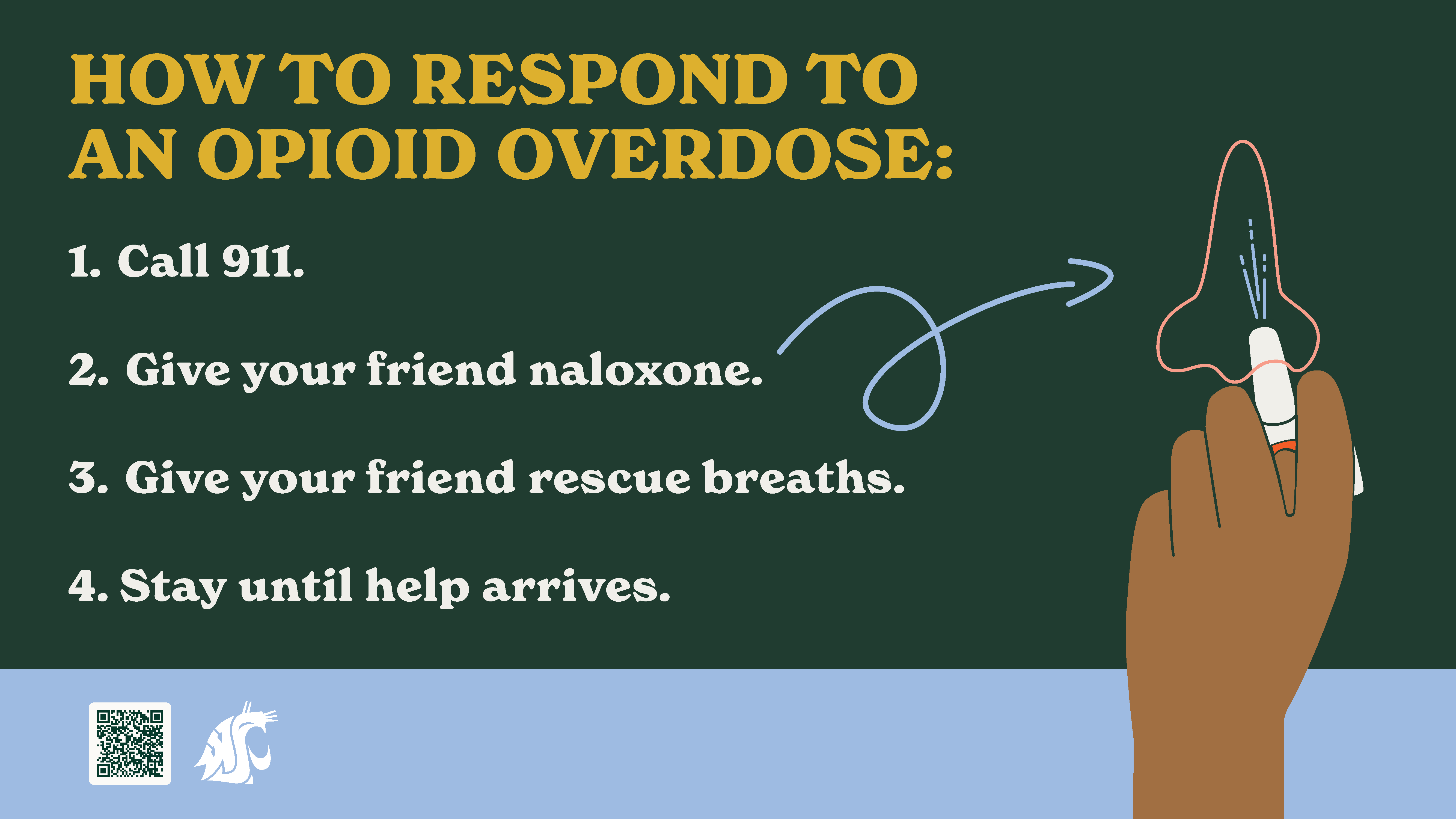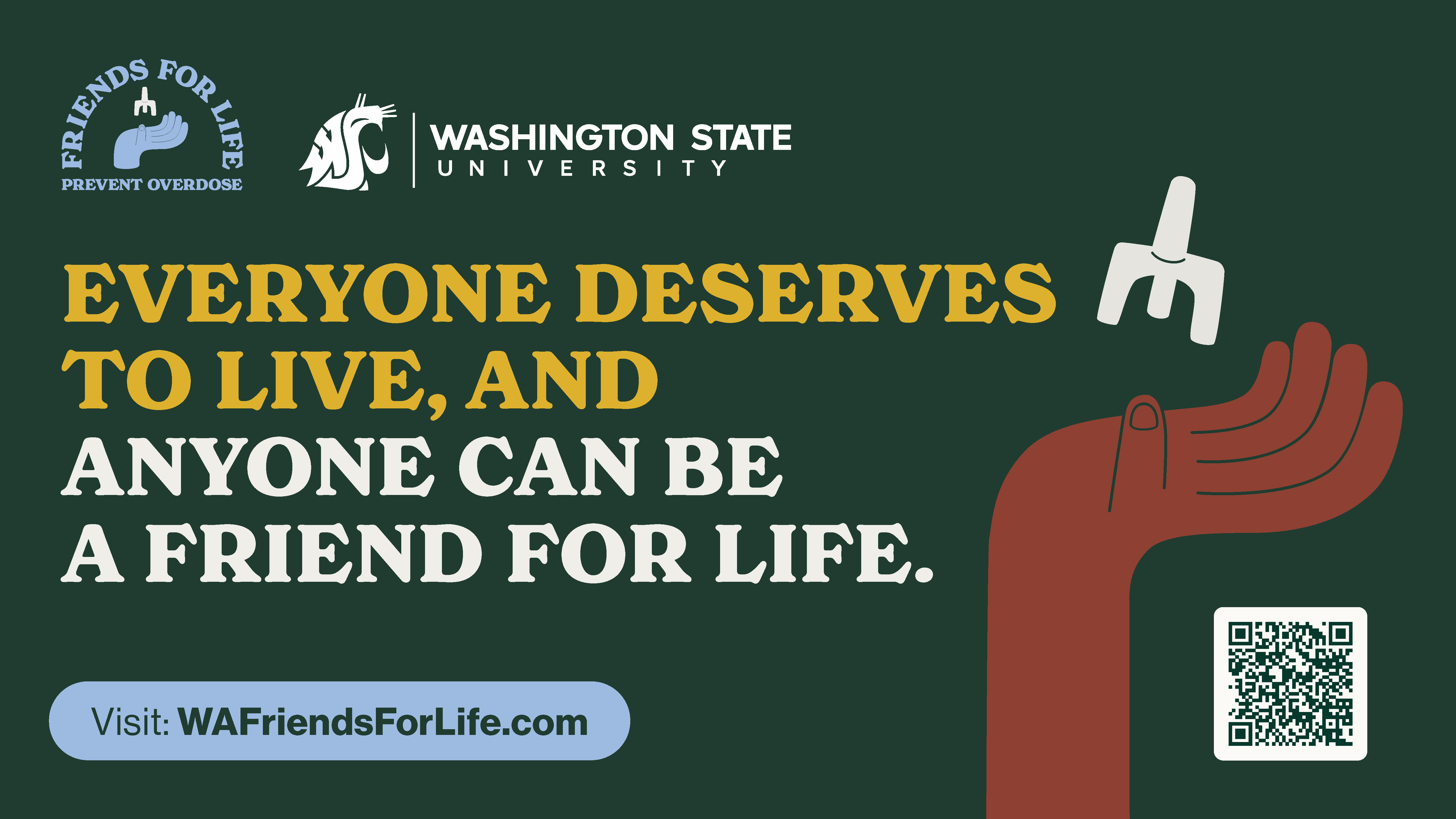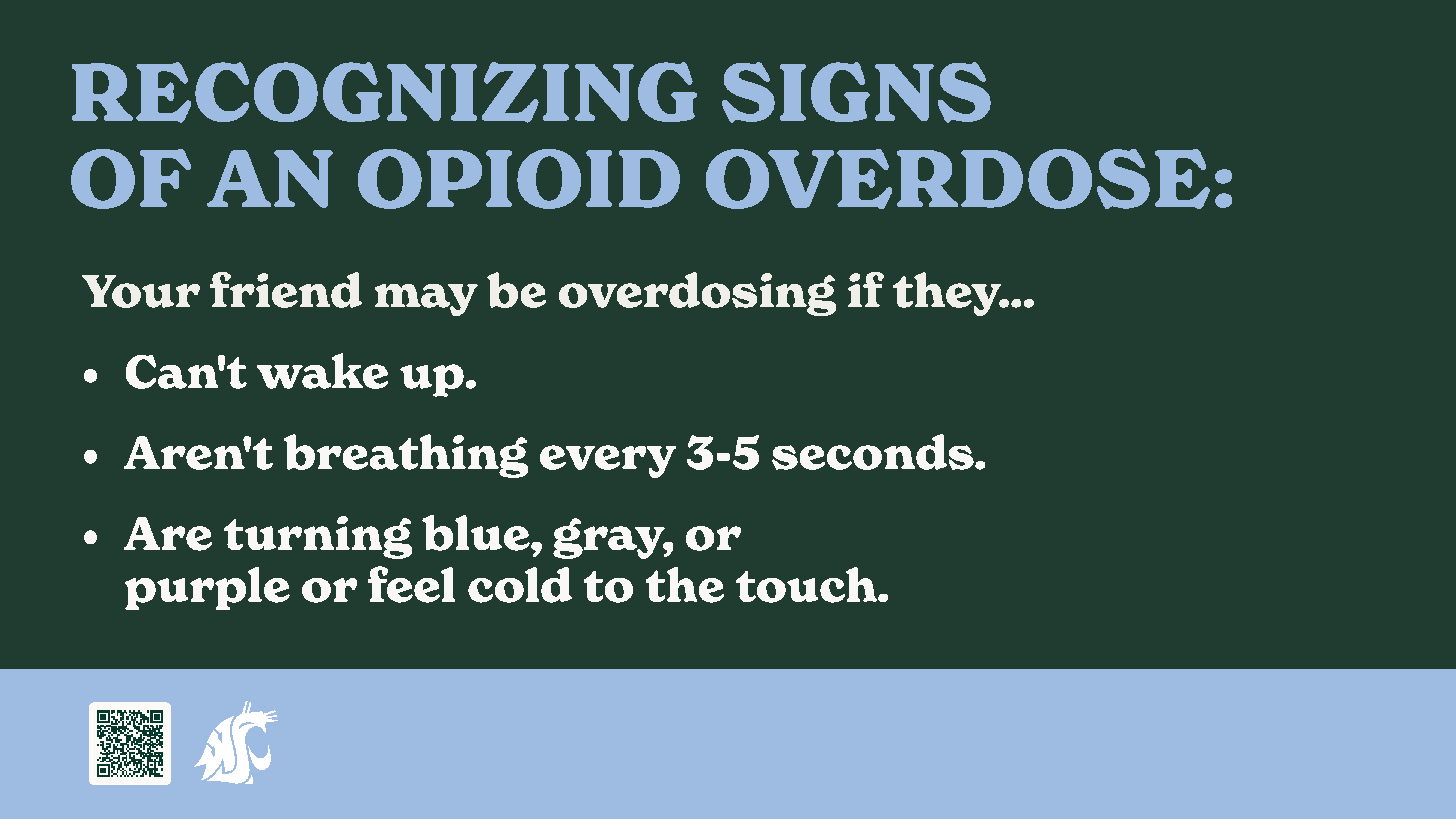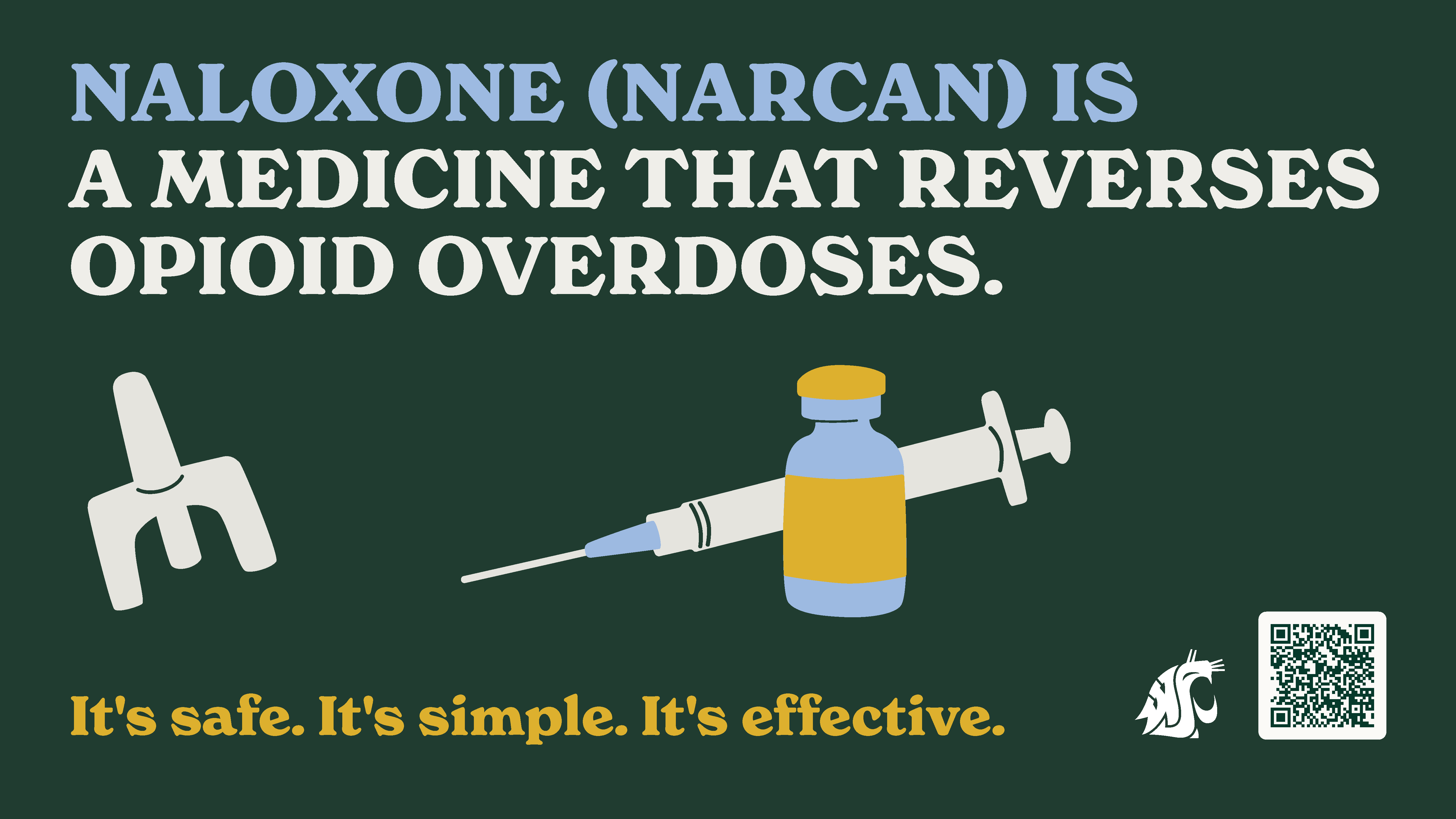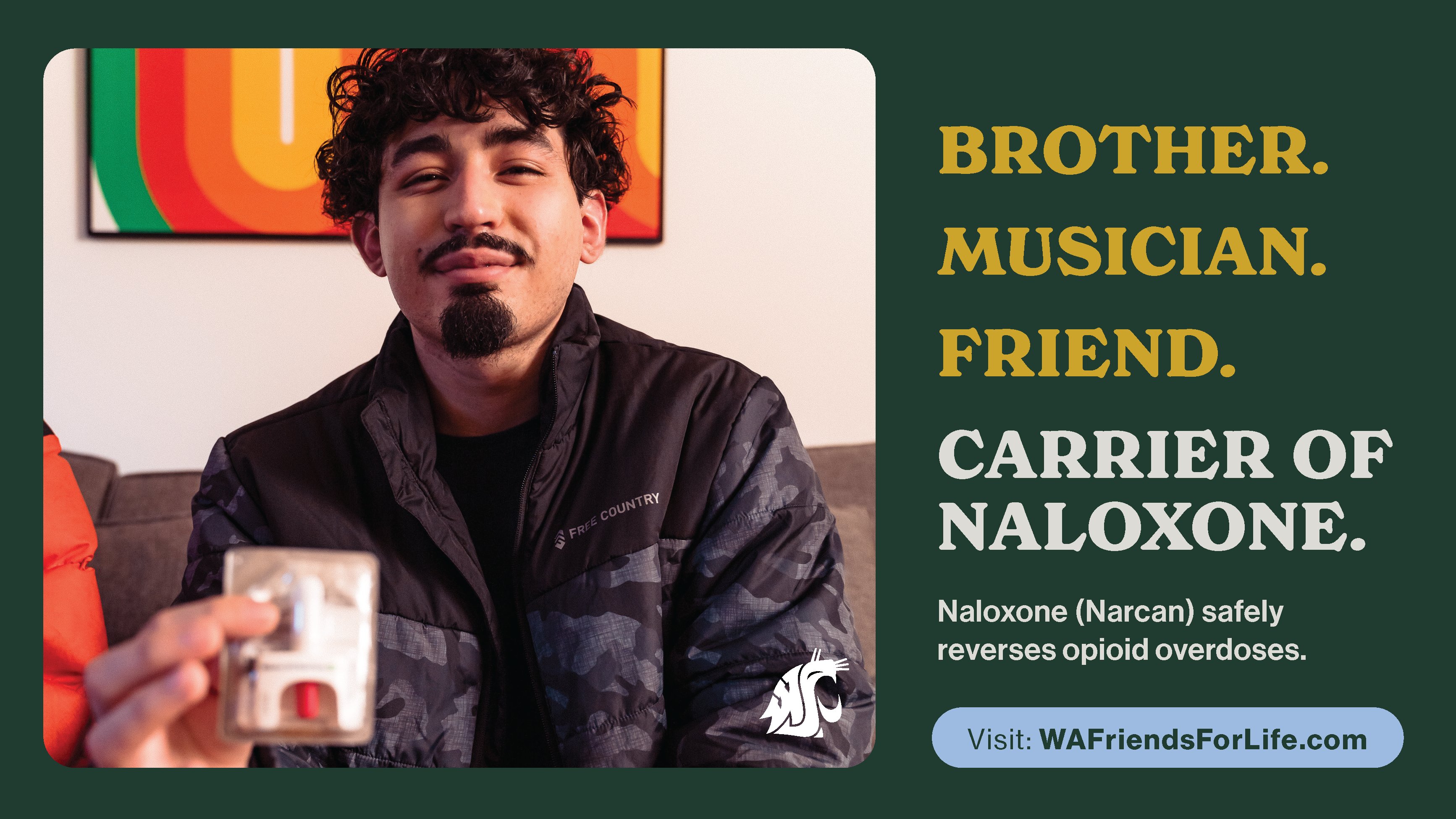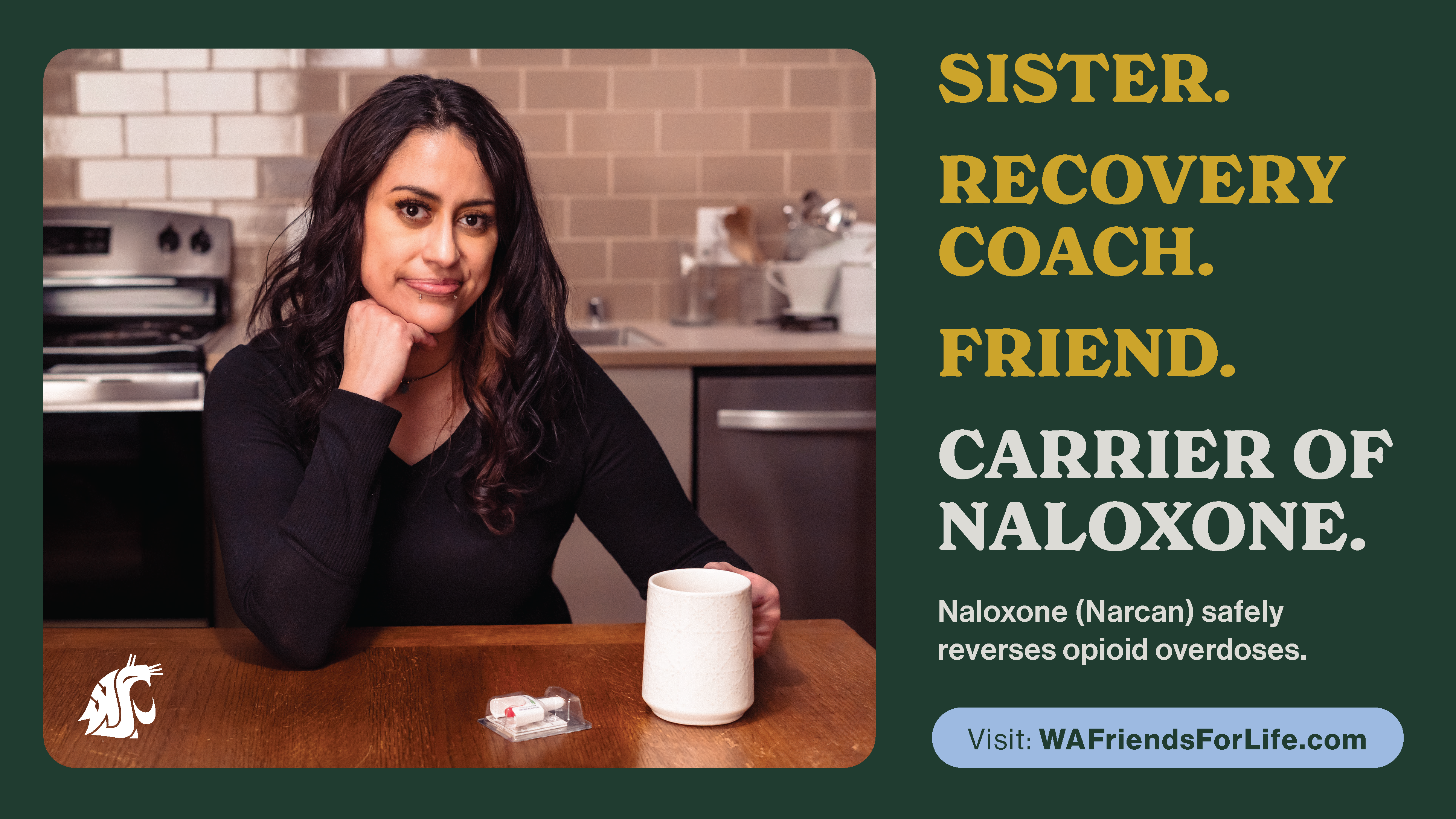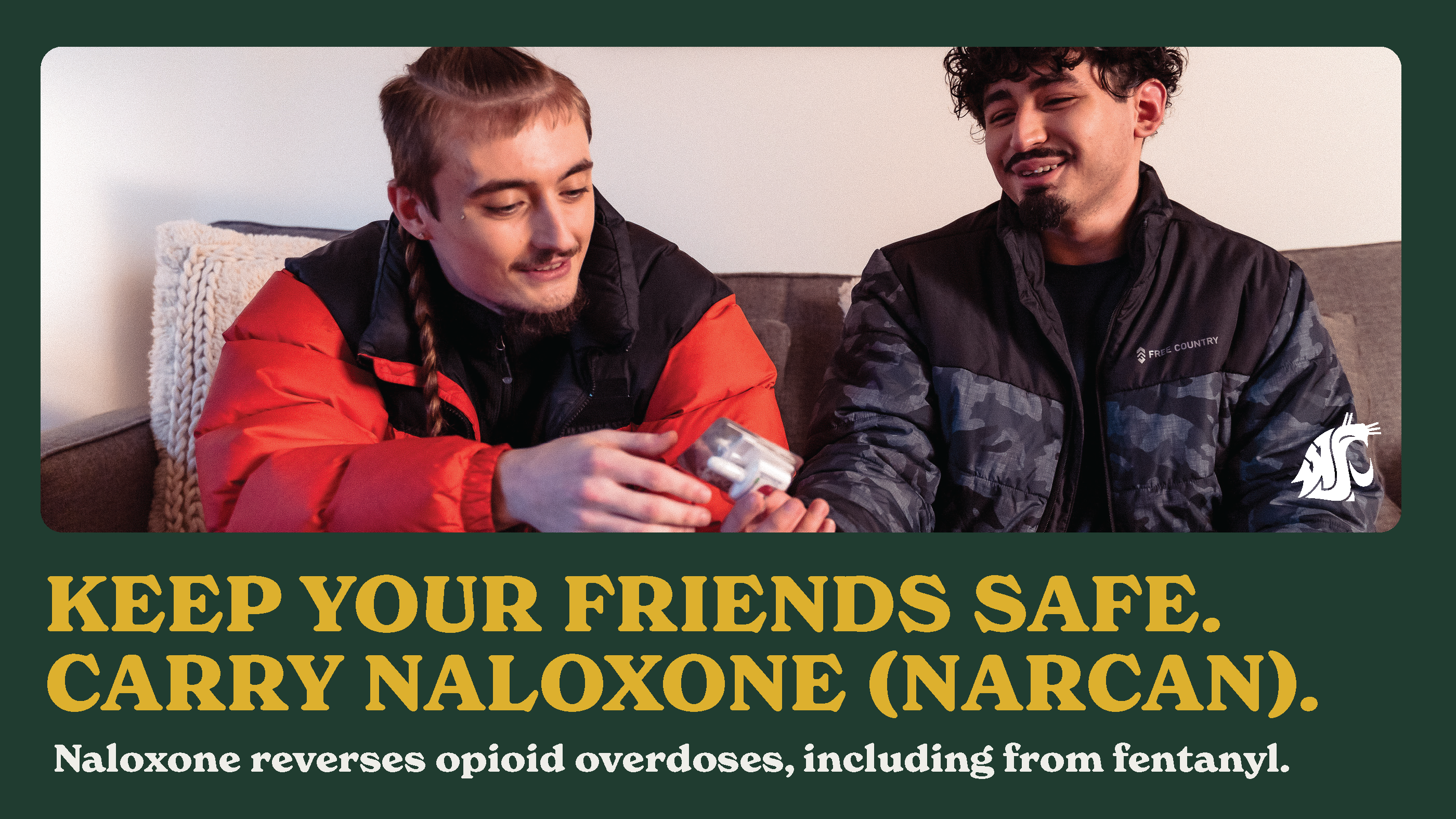Overdose Prevention Resources for All WSU Students
The following programs and resources are provided to students on all WSU campuses.
Reverse Opioid Overdose with Narcan (Naloxone)
Washington State University is fully committed to preventing the misuse of opioids in our community and helping eliminate the evolving epidemic of drug-related harms. The University recognizes the importance of being prepared to respond quickly to an overdose.
If someone takes more opioids than their body can handle, they can pass out, stop breathing, and die. Overdose can take seconds to hours. Anyone who uses opioids can overdose. Anyone at risk of having or witnessing an overdose can carry and use naloxone, the medication to reverse opioid overdose.
In Washington State, if you get medical help for an overdose or alcohol poisoning, Good Samaritan laws are in place so you and the victim cannot be charged for drug use, possession, or underage drinking. Additionally, the WSU Good Samaritan Guideline ensures that students receive prompt and appropriate attention during alcohol and/or drug intoxication.
House Bill 2112 Compliance
Opioid and fentanyl overdose prevention education is available to WSU students. See education and training opportunities below.
- See the Upcoming Trainings listing below for monthly Overdose Prevention & Naloxone Training provided in person (Pullman campus) and via Zoom (all WSU campuses) by Cougar Health Services (CHS) staff. These monthly trainings also are listing on CHS Presence and Cougs for Recovery social media.
- For WSU students, this is satisfied with the "Other Drugs" course provided by 3rd Millennium Classrooms. Learn more about accessing the course here.
- For faculty, staff, and community members, similar information is provided on this page and in the Opioid Overdose - Administering Naloxone video, provided by the Washington State Department of Health.
Quick Links
Upcoming Trainings
Learn more about Naloxone
What is Naloxone?
Naloxone, also known as Narcan, is a life-saving medication that can reverse an overdose of opioids—including heroin, fentanyl, and prescription opioid medications—when given in time. Naloxone is easy to use and small to carry. There are two forms of naloxone that anyone can use without medical training or authorization: prefilled nasal spray and injectable
Who can use Naloxone?
Anyone! It’s simple, safe, and legal.
- Simple – You do not need special training to give someone naloxone. Read the easy-to-follow instructions on the box or watch this video.
- Safe – If you use naloxone on someone who has not taken opioids, it will not hurt them. If a person has taken opioids, naloxone may cause withdrawal symptoms in addition to reversing an overdose. The person may wake up experiencing body aches, fever, irritability, or nausea. Naloxone is not habit-forming.
- Legal—Washington has a statewide standing order, which means anyone in the state can legally get, carry, and use naloxone. The standing order helps people with insurance access naloxone at low or no cost.
How does Naloxone work?
Naloxone blocks the effect of opioids and helps reverse an opioid overdose to wake someone up. Naloxone does not affect someone who is not on opioids. It does not work to treat the effects of other types of drugs or alcohol.
Naloxone starts working right away. If you give naloxone to someone who is overdosing and does not see a response within 2 – 3 minutes, you need to give another dose. Naloxone wears off within 30 – 90 minutes. That’s why calling for emergency medical backup is as important as not leaving until help arrives. Your friend can begin to overdose again if the naloxone wears off before they receive medical support.
Stay with your friend in case the naloxone wears off, and they overdose again. They might feel bad withdrawal symptoms. Let them know that if they use more opioids during this time, they will not reduce those withdrawal symptoms. They will only make it more likely that they overdose for a second time.
Carry naloxone so you’re always prepared.
Why carry Naloxone?
Naloxone saves lives. In Washington state and across the U.S., illicit fentanyl and other powerful additives are making the drug supply more unpredictable and dangerous. Most overdose deaths in Washington state now involve fentanyl. Here’s what you should know:
- Fentanyl is a strong, fast-acting opioid, so overdoses can happen quickly.
- Fentanyl can be added to fake prescription pills and other drugs or sold as a powder.
- Even one pill or hit can be enough to cause a fatal overdose.
- Naloxone, also known as Narcan, reverses opioid overdoses.
- You don’t need any special training to carry or use naloxone.
Talk to your friends about the risks of the drug supply so they can make informed choices about if and how they use it. And carry naloxone with you, so you have what you need to reverse an opioid overdose.
What are the signs of an overdose?
An opioid overdose may look like your friend has just fallen asleep, so it’s important to know the subtle signs of an overdose. Your friend may be overdosing if:
- They can’t wake up
- They aren’t breathing or are breathing infrequently
- Their skin is cold, blue, or gray
If you think your friend has overdosed, call 911 right away and give them naloxone. Washington state’s Good Samaritan law protects you both from prosecution for simple drug possession.
Learn more about the signs of an overdose and what you can do to help.
Will I get into trouble if I call for help when someone is overdosing?
In Washington State, if you get medical help for an overdose or alcohol poisoning, Good Samaritan laws are in place so you and the victim cannot be charged for drug use, possession, or underage drinking. Additionally, the WSU Good Samaritan Guideline ensures that students receive prompt and appropriate attention during alcohol and/or drug intoxication.
Where can I get Naloxone?
In the community, Naloxone is also available to purchase over the counter at pharmacies like Rite-Aid, Walgreens, and CVS, with prices ranging from $40 to $50. Many communities also have resources that make naloxone available to residents for free. Find a place near you to pick up naloxone.
WSU Campus Locations will be listed soon!
How do I help someone who is overdosing?
- Call 911 - If your friend is unresponsive, not breathing, or turning blue or gray, call 911 right away.
- Give naloxone - Give your friend one dose of naloxone every two to three minutes until their breathing is normal again. They should breathe once every three to five seconds. Do this even if you aren’t sure they took opioids.
- Give rescue breaths: After you give the first dose of naloxone, lay your friend flat on the ground, tip their chin back, and give them one rescue breath every five seconds.
Check that their chest is rising and falling with each breath that you give.
Stay until help arrives. When your friend wakes up, they may be confused or not feel good. They should not take any more drugs, and they should get medical attention. Naloxone wears off within 30 – 90 minutes. When it wears off, they may begin to overdose again. If you don’t call 911, stay with your friend in case the naloxone wears off, and they overdose again.
Remember to check in with yourself. You cared for your friend in a big way and deserve care, too.
How do I give nasal spray naloxone?
- Open the packaging. Do not test the nasal spray. The canister only holds one dose and cannot be reused.
- Hold the canister - Place your thumb on the bottom of the plunger and your first and middle fingers on either side of the nozzle.
- Insert the nozzle into your friend’s nostril - Your fingers on either side of the nozzle should touch the bottom of the nose.
- Press the plunger all the way. Remove the nasal spray after administering the dose.
Where can I get Naloxone & Fentanyl Test Strips?
Community Locations:
In the community, Naloxone is also available to purchase over the counter at pharmacies like Rite-Aid, Walgreens, and CVS, with prices ranging from $40 to $50. Many communities also have resources that make naloxone available to residents for free. Find a place near you to pick up naloxone.
WSU Locations:
Pullman Campus
Residence Halls: Kits in the Residence Halls are available at the Area Desks in the halls below:
- Gannon Goldsworthy
- Northside
- Stephenson
- McCroskey
Cougar Health Services
Kits are available at Cougar Health Services in the seating areas or at the front desk in the Medical Clinic and Pharmacy.
Cougs for Recovery Narcan Boxes
- Student Recreation Center: Ground-floor hallway next to locker rooms.
- The Compton Union Building: Ground-floor alcove near the Wellness Kiosk.
WA Friends for Life Campaign
Additional Resources
- CDC: 5 Things to Know About Naloxone
- Video: How to give Naloxone
- Parents: Start the conversation
- Parents: Use your influence
- Talk to teens
- Keep your circle safe
- Opioid Overdose - Administering Naloxone on Vimeo
- Friends for Life video: HCA - Administering Naloxone
- For Our Lives: Native American Resources
- Harm Reduction Toolkits
